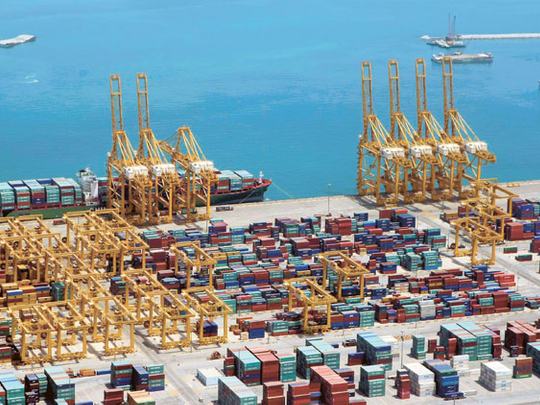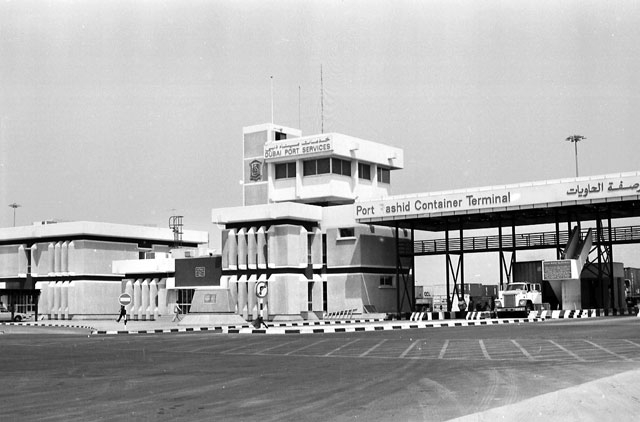
Dubai: If there is one sphere of activity — apart from oil and gas — rooted firmly in the country's past and integral to its future, it has to be the ports and all the logistics operations that move seamlessly into and out of them.
Yes, geography has been quite kind in creating a maritime industry out of the multiple locations that were there and create deep-water hubs for the global movement of trade.
But to get to that point, ample foresight and planning had to be in place to go with the undoubted quality of the natural resources on the ground.
The ports infrastructure created in the last four decades — and the constant upgrades and expansions put in phases thereafter — confirm that intricate planning is very much in place.
It explains the thinking that led to the creation of the Dubai Creek all those years ago and the decision to develop the Jebel Ali Port and Free Zone. The same thinking applies to why DP World — currently the world's third-largest port operator — had the gumption to confirm a $1 billion (Dh3.67 billion) commitment just last month.
But that investment is not going into topping up the infrastructure here, but on the London Gateway project that it is working on now and scheduled to go operational in 2013. Located about 40km from central London, the project will create a £1.5 billion (Dh8.50 billion) deep-sea container port incorporating Europe's largest logistics park.
"London Gateway will help UK businesses improve efficiency and competitiveness. It will also provide the UK with a premier, world-class global trading centre," said Sultan Ahmad Bin Sulayem, chairman of DP World, at the recent media event in London.
More remarkable still is the escalation of commitment coming at a time when Dubai itself is easing its way through the havoc caused by the global financial storms of 2008.
The passage since has not been without its fair share of incidents, but the impression is gaining ground that it has reached calmer waters or will shortly do so.
To help the process along, as one of the pillars of the local economy DP World is being given a deeper foundation and across a wide geographic net. The intention here is to make sure that DP World lives up to is name indeed.
New commissions
The $1 billion commitment to the London Gateway project — which will have an initial capacity of 1.6 million twenty-foot equivalent unit (TEUs) — reaffirms it is not just the here and the immediate that Dubai has in mind for its ports strategy. New port operations were commissioned in India and Pakistan during the first quarter of this year and more are on the way across a global footprint.
Neighbouring Abu Dhabi is also in the throes of an equally ambitious new capacity creation, but with a local outlook. The existing operations in Mina Zayed — which handled 518,000 TEUs last year from a two per cent gain year-on-year — are to move to the new Khalifa Port in the fourth quarter of 2012. In turn, Phase One of the Khalifa Port development spearheads Abu Dhabi's drive to emerge as a re-export hub in its own right.
"When Khalifa Port's first phase becomes operational in 2012, it will have capacity of two million containers and nine million tonnes of cargo a year — four times higher than the existing capacity at Mina Zayed port," said Raghu Menon, managing director and chief consultant at the logistics operator Hexomatrixx-MPCL Venture.
"Ninety-five per cent of containers that come to Mina Zayed stay in Abu Dhabi — it is a destination port, so Khalifa Port will become a destination port."
According to the gameplan, the Khalifa port will be developed in stages and may eventually offer capacity of 15 million TEUs and 35 million tonnes of bulk — and break-bulk cargo per year. It would tie in with the simultaneous development of the Khalifa Industrial Zone (Kizad).
Major positive
Recent events in the Middle East accentuate the strategic value UAE's ports and logistics sector play in the global movement of goods. Risk premiums have firmed up on some Middle East specific routes, though this has so far not been reflected on ships calling in at Dubai ports.
Another major positive is that the cargo industry has finally managed to put behind it the worst of 2009. "It has started to experience a healthy upswing in cargo volumes; however it has been passing on changes on account of the volatility in fuel prices as depending on the size of the ship — 30 to 35 per cent of the running cost is from fuel," said Menon.
"It's also observed there's a moderate to low rate to select destinations with longer lead times and transshipments in comparison to direct sailing from Dubai with a shorter lead time."
While the opportunities are many, the UAE's ports will need to face up to challenges and they are quite significant. The other leading port operators in the Gulf have their own ambitious port expansion programmes.
Kuwait's growing presence as a port city continues apace with plans for up to three new ports, including the $1.1 billion Boubyan Island development.
Then there is Saudi Arabia, which saw its port throughput increase by nearly ten per cent between 2009 and 2010 even with a global downturn on.
The cargo handled came to under 155 million tonnes. The Jeddah port handled the majority of the cargo through its 58 berths and dedicated terminals for containers and bulk cargo.
Slightly further afield, Jordan's primary gateway to the Red Sea, Aqaba Container Terminal, is undergoing a $235 million upgrade to boost its annual capacity to 1.6 million TEUs.
But no one will deny that the UAE has had a head start in capacity creation. That would ensure the other regional ports would need to do a lot more to even reach the current levels in the UAE. And keep in mind local ports are not about to stand still in working on their own medium and long term requirements.
It's full steam ahead.














